Imaging Projects
In this blog, I will share the results of all of my imaging projects. The newest will be at the top and the oldest will be further down the stack. Going back in time here is interesting - some of my early stuff was pretty rough - but I did not see it that way at the time - I was thrilled to get anything back that looked like an image! Hopefully, you will see how my work has progressed with time!

Messier 27 - A Reprocess of My Dumbbell Nebula Data in SHO - (10.25 Hours)
This imaging project is not a recapture of data for M27 - the Dumbell Nebula. Rather it is an effort to reprocess old data using new tools and new processing methods to address some concerns I had about the original image - where I thought that the stars were bloated and unsharp, and that I thought I should be able to bring out more detail in the amazing outer gas shells that narrowband imaging shows for this target.
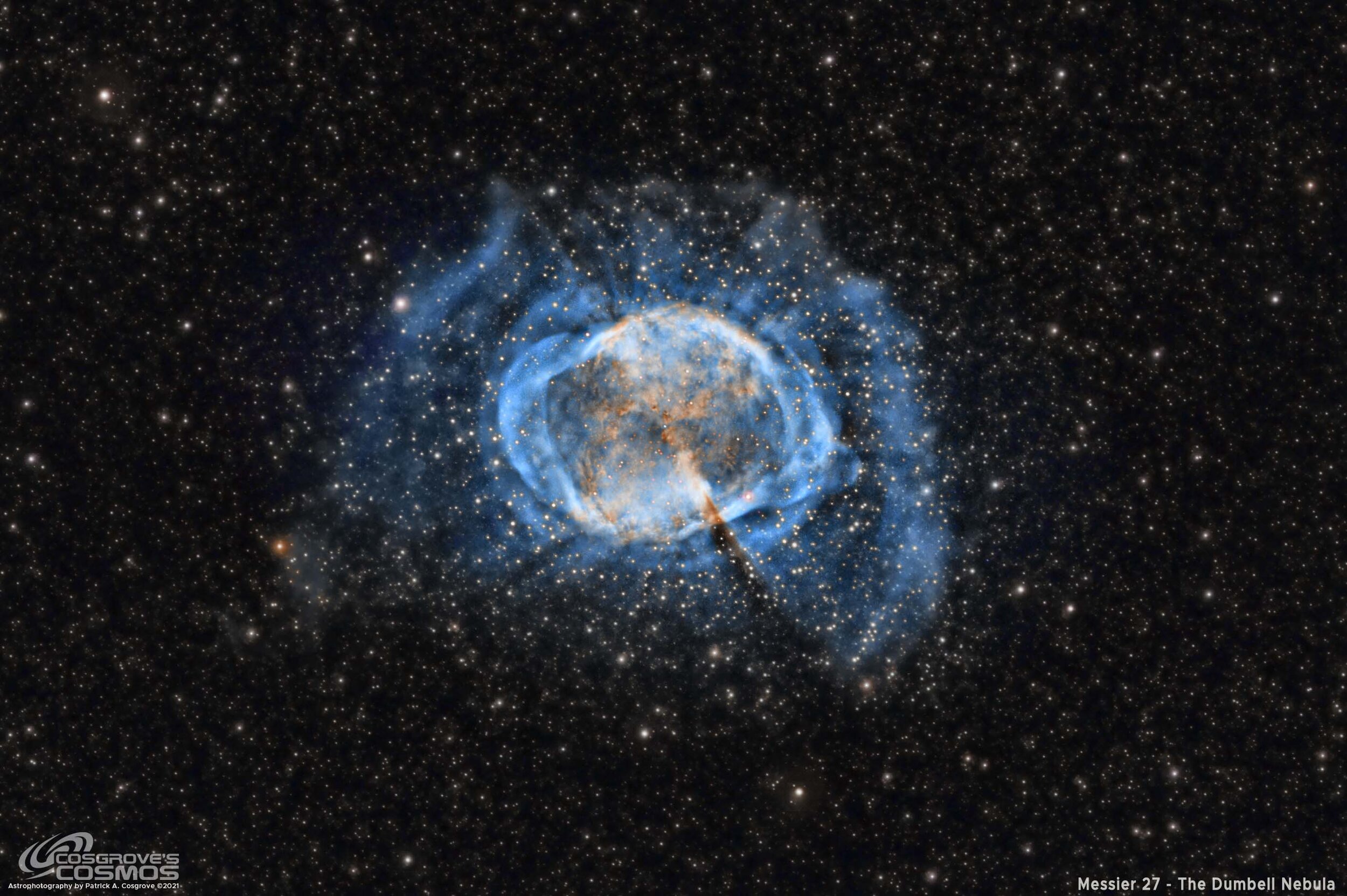
Messier 27 - The Dumbbell Nebula in Narrowband - 10.25 Hours
Messier 27 is the well know and often photographed Dumbbell Nebula located about 1200 light-years away in the constellation Vulpecula. This is the third time that I have imaged this object - and this one stands out because it was taken in narrowband with over 10.25 hours of integration! It reveals details that I have rarely seen associated with M27.
This was shot with the AP130 platform using the ZWO ASI2600MM-Pro Camera.
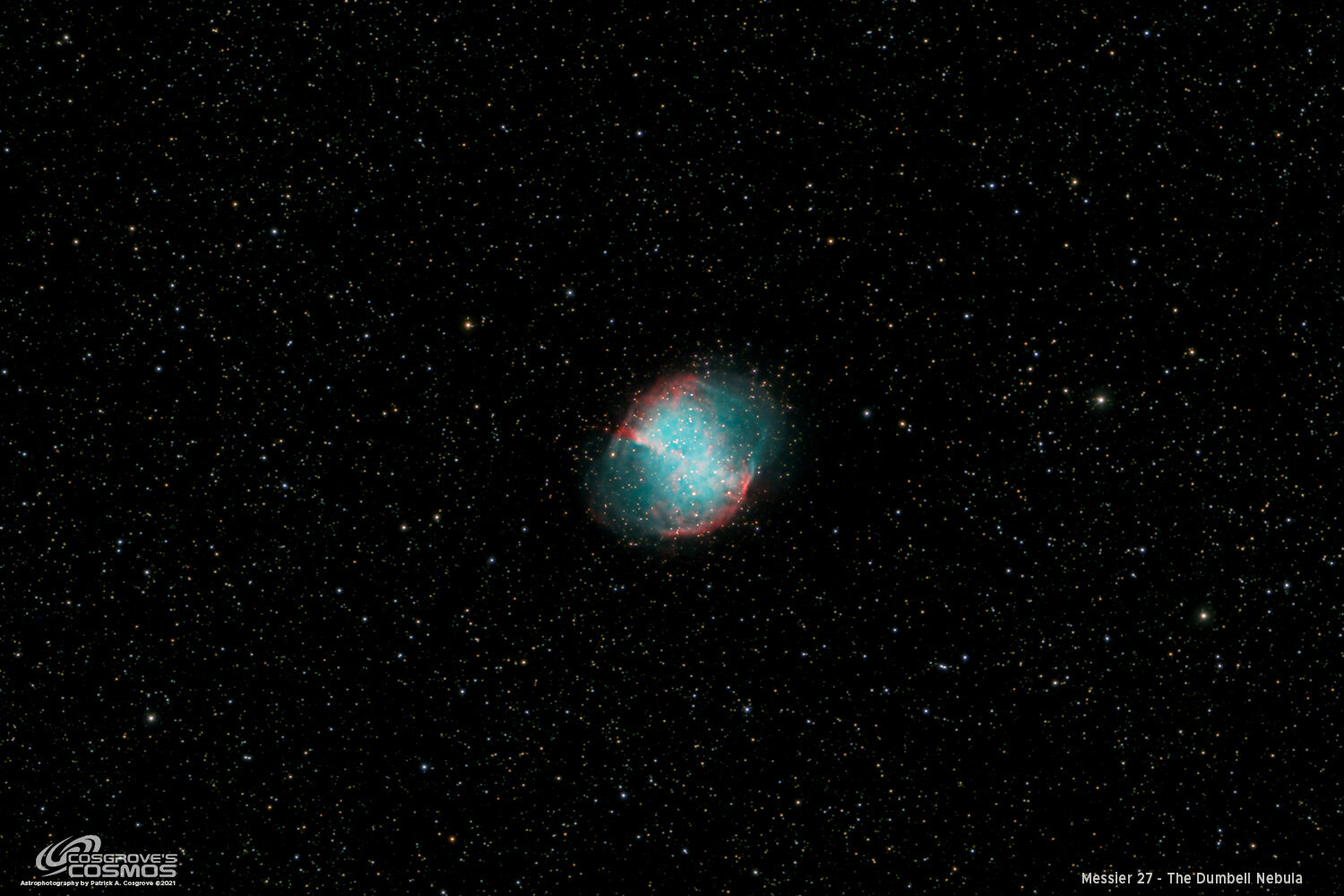
Messier 27 - The Dumbell Nebula
Messier 27 is a planetary nebula in the Constellation Vulpecula and is located about 1200 light-years away. M27 is also known as the “Apple Core” nebula and NGC 6853. It's basically a star the blew up between 10,000 and 14,000 years ago, and we get to see its expanding gas cloud. While this object is small, it is twice the size of the Messier 57 (The Ring Nebula) and allows for a bit more detail to be imaged. This was my second attempt at M27, the first being 2019 when I was first starting. See the comparison between the two.
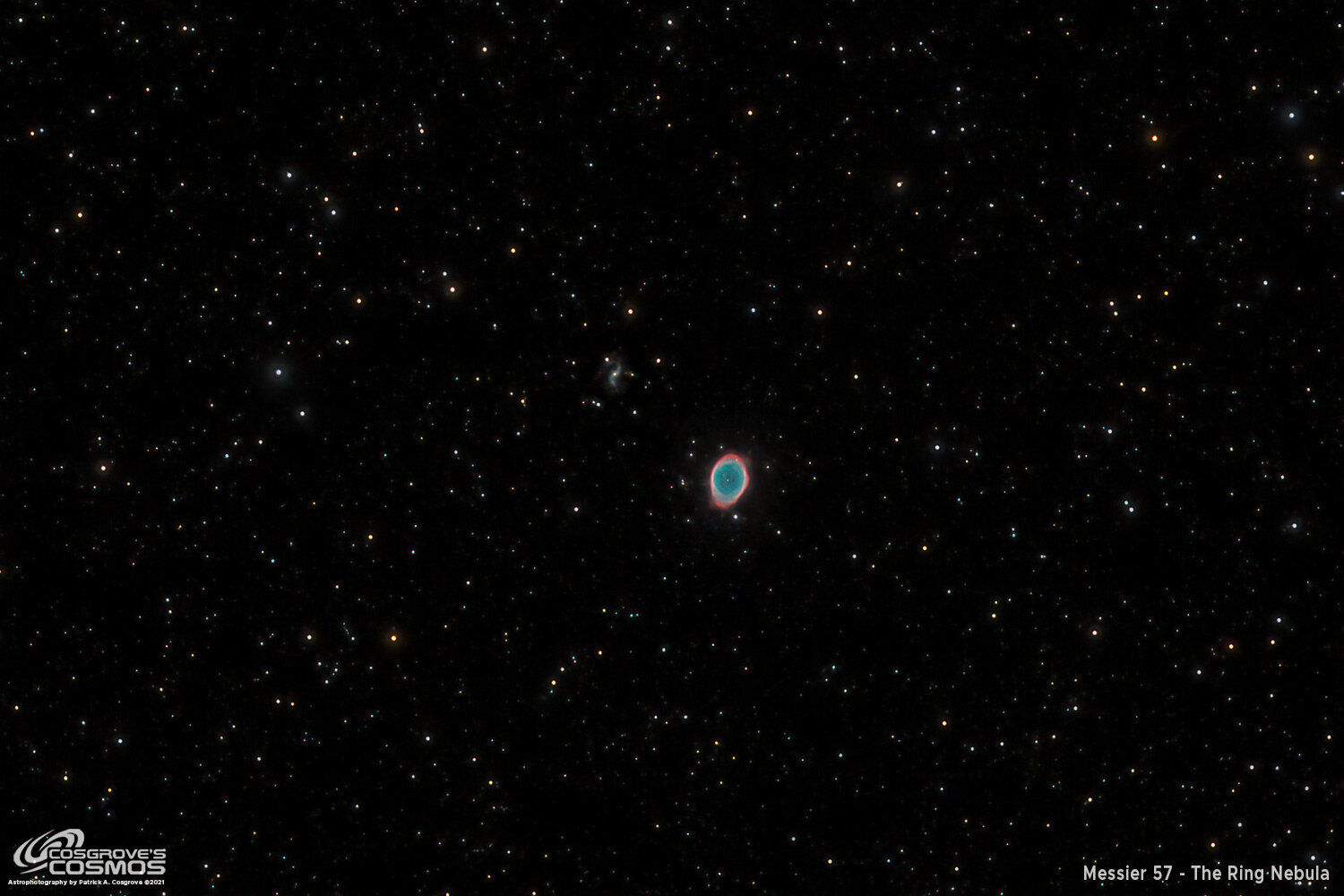
Messier 57 - The Ring Nebula
Messier 57, also known as NGC 6720, and the “Ring Nebula” is located about 2400 light-years away in the constellation Lyra. M57 is a planetary nebula - an expanding shell of gas and dust expelled by its star in the last stages of its life. The outer shell is expanding at a rate of ~one arcsecond per century. The blue-green color of the central area is due to doubly ionized oxygen. This was my second attempt at M57, the first being 2019 when I was just starting. See the comparison between the two.
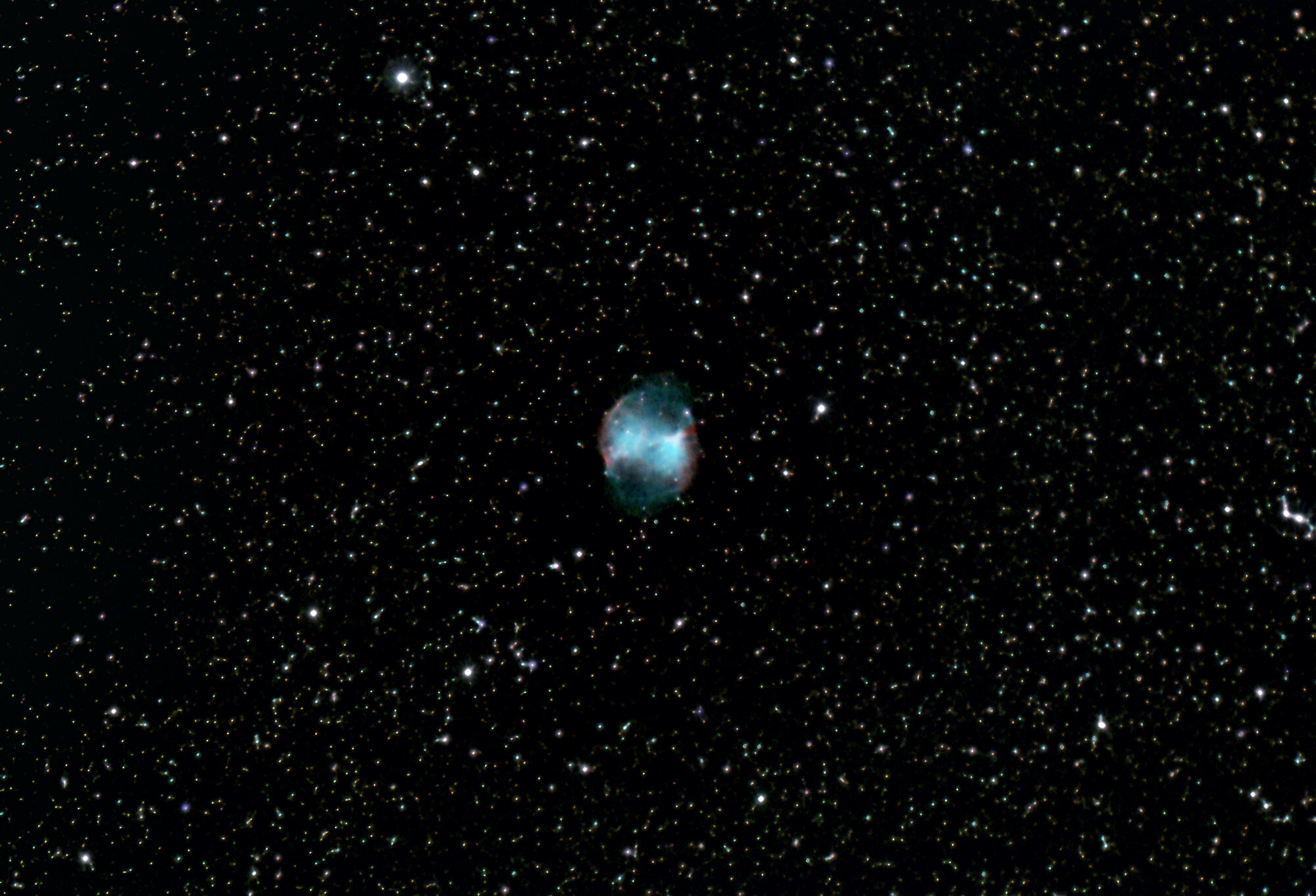
Messier 27 - The Dumbell Nebula - 2019 Version
Messier 27 - the "Dumbbell Nebula". This is a planetary nebula - basically a star that has thrown off its outer shell and we are seeing that gas still expanding around the remaining star. Located in the constellation Vulpecula, M27 is 1360 light-years from Earth.
One of my very first images.
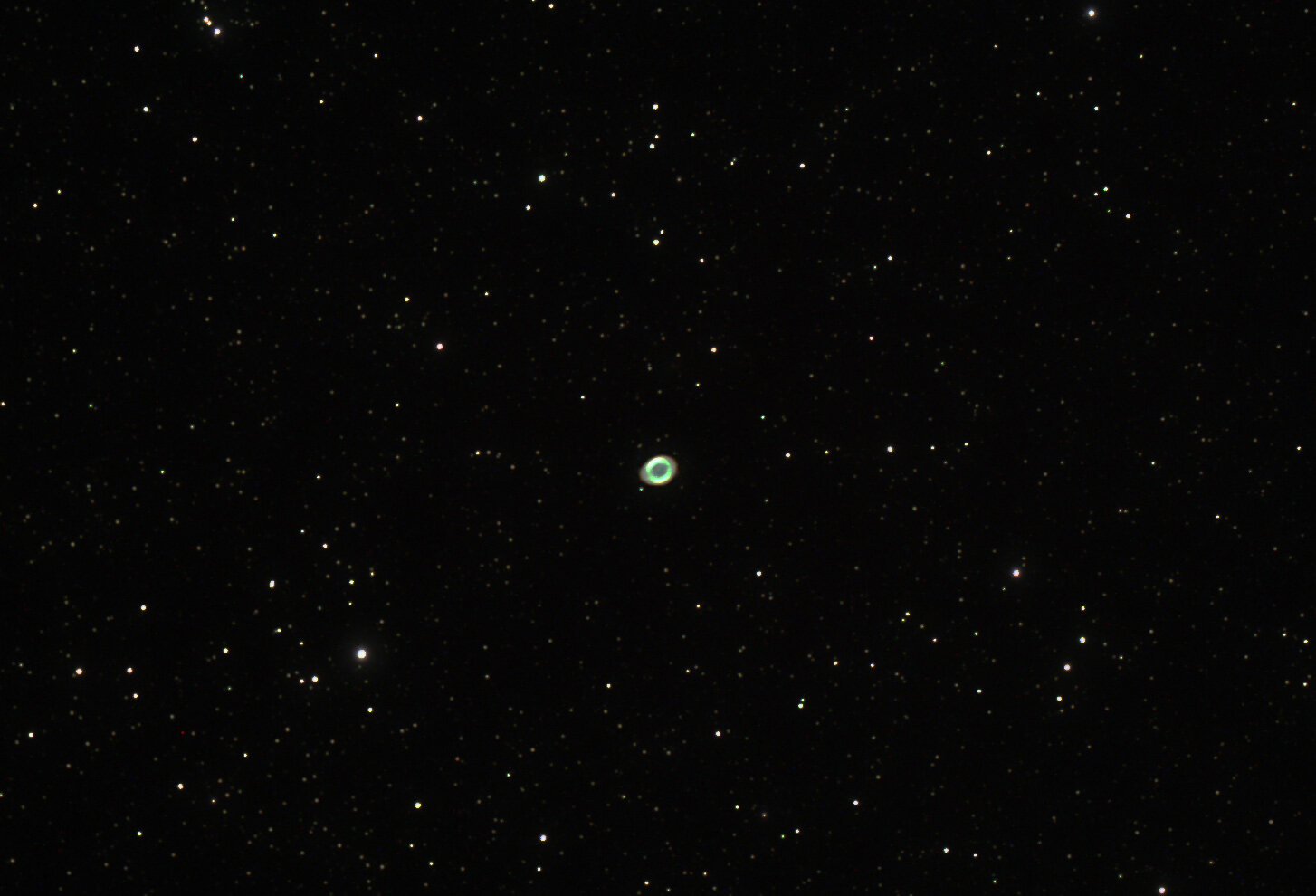
Messier 57 - The Ring Nebula - First Version (2019)
M57 - The Ring Nebula. This is a tiny planetary nebula in Lyra. Probably too small for my imager scope and image scale. Not all that impressive, but I wanted to put it here to document progress later on...
Very first attempt on M57.
